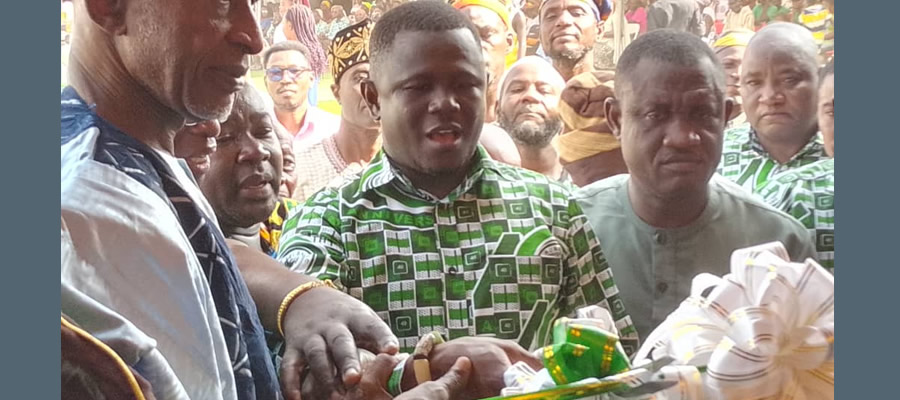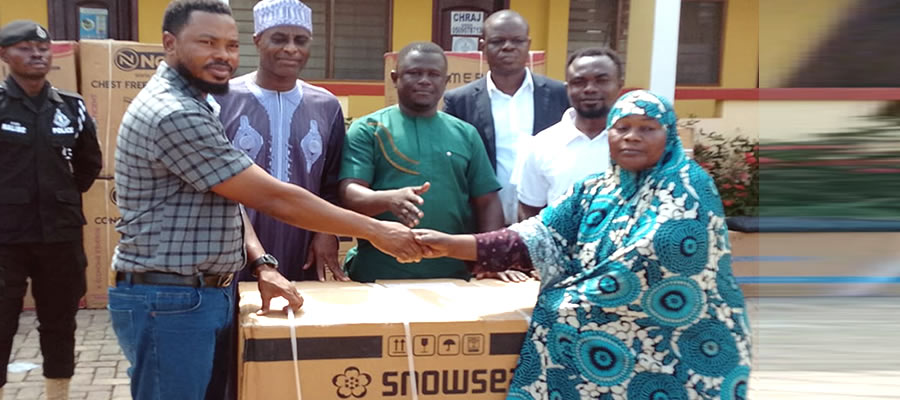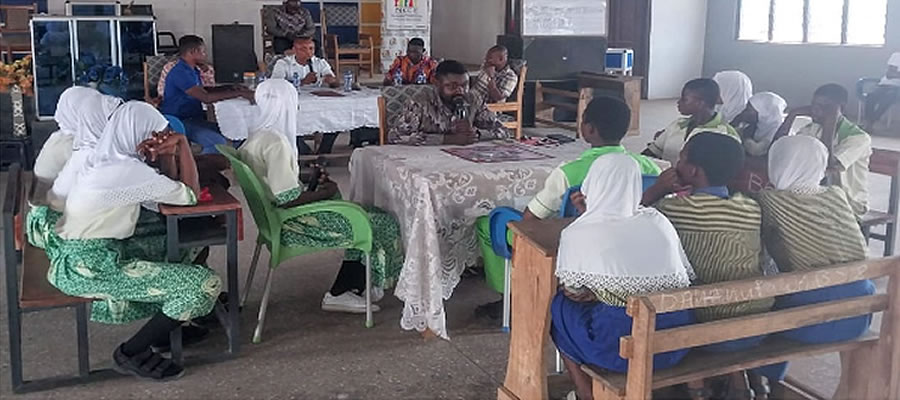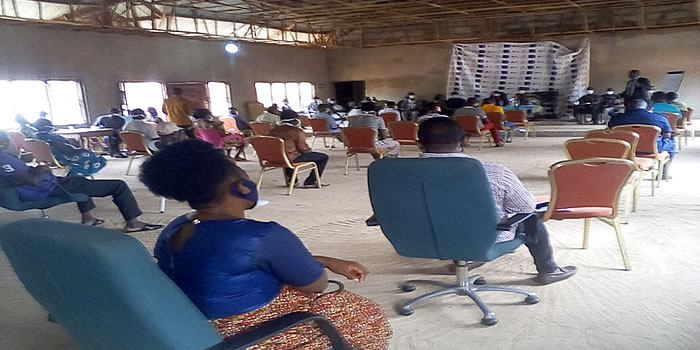

CULTURE
Culture and Indigenous Knowledge
The people of the Pru West District has a very rich cultural heritage that is envious of other sister districts. The annual Nkyifie Annual Yam Festival celebrated by the people of Prang, Kwabena celebrated by Abease and the religious annual Maulideen Festival of the people (Muslims) of Prang are some of such sacred rich cultural practice that unites the people for a common course. The Molideen Festival brings patrons from all over the country and other part of the world because of its spiritual value. Beyond this is a rich heritage of herbal medicine and indigenous knowledge that is most often quite relevant than orthodox practices. A very common practice is the use of indigenous knowledge to heal people who have broken legs or arms. It is most often effective and guarantees speedy recovery than that practiced in the formal hospitals.
The challenge for district development is how best to streamline and harness this local knowledge into our formal health delivery systems. It is a challenge because in Ghana health policy is basically a national issue and therefore driven by central government policy rather than local governments. This challenge notwithstanding, it is in the interest of district administration to ensure that such rare knowledge of extreme importance is not left to fade out with the death of such practitioners. There should be mechanisms to streamline and support their continuous practices.
Festivals
There are a number of festivals that are celebrated by the people in the District. The most widely celebrated festival are the Nkyifie Yam festival, Molideen and Kwabena (Abease). The table below depicts festivals their locations and the time they are celebrated.
Table 6 - Festivals Celebrated in Pru West District
Traditional Setups
The district currently has two Traditional Paramount Chiefs namely; Prang Paramountcy and Abease Paramountcy. It is believed that, these paramountcies were are from the Nchuburu and Brong ethnic groupings who work together as separate traditional leadership structure, there however spotted internal litigations in some few communities but the district is generally peaceful in terms of traditional administration. Despite this, the two paramountcies collaborate in promoting the development of the District.
Situation of Communal Spirit and Participation
The tradition of communal spirit and participation in the development process of the communities especially in terms of labour and financial resource is a major project implementation strategy in ensuring sustainability of programmes and projects. There is somewhat high communal spirit in the District especially in the rural areas where the Chiefs command a more respect. However, this spirit for some time now is becoming very low or almost non-existent in the urban communities.
Religious Composition
The distribution of the population by the various religious denominations is not different from that of the region. Christianity forms about 54% compared to the regional figure of 70.8%. Pentecostal/Charismatic is the dominant denomination accounting for 19.7 percent of the population. There are more female Christians (56%) than male Christians (52.2%) in the district, with 20.8 percent of the females being Pentecostal/Charismatic. Islam is the second largest religious group representing 21.7 percent of the population.
Other people in the district are adherents of African Traditional religions constituting 12.6 percent of the population with a higher proportion of males (13.4%) than females (11.9%). However, 11.2 percent of the population practice no religion at all, and 0.3 percent represents other minor religious groups.
Ethnicity
The district is ethnically diverse with people from northern Ghana forming about 65% of the population, among the northern tribes are Konkonbas, Mamprusis, Dagonbas, Gonjas, Dagaaba?s, Frafras, Kusasis, and the Moshies. Battors, Gas, Adangba and a few Akans follow. The natives, Chumerus and Bono constitute a relatively small portion of the population. Even though, the natives form a small portion, the population shows homogeneity which has positive implications for development
Cultural Practices Inimical To Development of the District
There are still some few cases of early marriage within some of the migrant communities. This calls for a sustained public education to forestall such practices. However, the challenge is that these people are mostly nomads making it difficult to communicate to them. It only comes to light when there are complications that may cost the life of the victim.
Key Development Issues
1. Inadequate publicity on festivals
2. Early child marriages
Tourism
The strategic religious inclination of the district capital offers potentials for the development of tourism and the hospitality industry. Especially the festivals associated with the religious celebration which often attracts patrons from across the globe offers great opportunity for development. The chain of rock caves in the southern-western part of the district which houses the Rosetta fruit bats and other wildlife are all areas which needs to be harnessed for the benefit of both the community and the district. The weekly traditional markets at Prang, Zabrama, Dama-Nkwanta, Abease, Islands along the Volta Lake are not developed.
Some of the potentials sites include:
· The caves and rocks at the Buom which house Rosetta Fruits bats
· The confluence (meeting point) of the Pru river and the Volta lake
· The rich culture and traditions of the people of Prang, and Abease. Example the Yam festivals of the chiefs and people.
· Waterfalls at Benim on the Wansan River.
The hospitality industry also boasts of hotels and guest houses like:
· Modena Hotel, Prang
Date Created : 7/6/2023 12:00:00 AM










 facebook
facebook
 twitter
twitter
 Youtube
Youtube
 +233 593 831 280
+233 593 831 280 0800 430 430
0800 430 430 GPS: GE-231-4383
GPS: GE-231-4383 info@ghanadistricts.com
info@ghanadistricts.com Box GP1044, Accra, Ghana
Box GP1044, Accra, Ghana